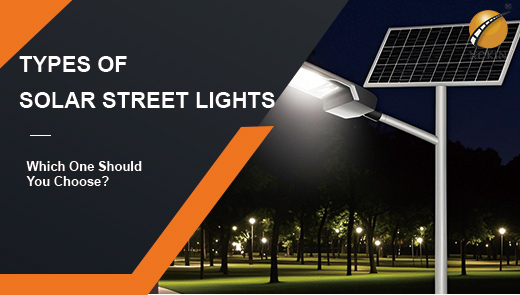Types of Solar Street Lights: Which One Should You Choose?
On the way home at night, bright solar street lights provide great security for people, and bright streets make nighttime travel safer, as well as make crimes have no place to hide. In today's era of focusing on environmental protection and energy saving, solar led street lights are being more and more widely used in various fields as a sustainable lighting solution. However, in the face of a wide variety of solar street lights on the market, how to choose has become a concern for many people. In this article, we'll take a closer look at the different types of solar powered street lights and discuss the key factors to consider when making your choice.
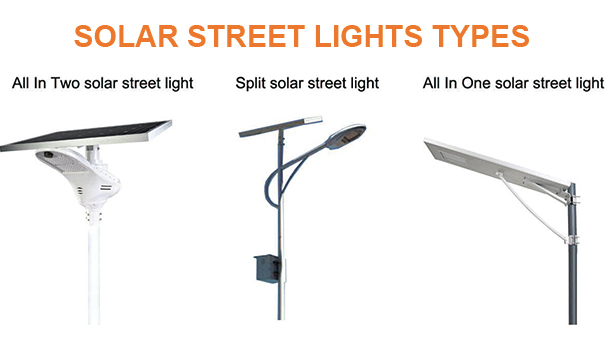
What Are the Advantages of Solar Street Lights?
Solutions to power supply constraints
In some remote, mountainous or rural areas, power supply often faces difficulties. These areas are difficult to be covered by traditional power grids due to their remote location or poor infrastructure, and may even have no power supply at all, or unstable power supply. In these solar-rich areas, solar street lights rely on solar power to provide a reliable solution for nighttime lighting. It not only solves the power supply problem, but also provides stable and continuous lighting in these areas. For example, in some remote mountain villages where traditional street lights are difficult to realize due to difficult and costly wiring, solar street lights easily solve the lighting problem for villagers traveling at night.
A model of energy saving and environmental protection
Solar street lights do not need to rely on grid power, avoiding lighting interruptions caused by power outages or grid failures. It adopts low-voltage DC power supply, which greatly reduces the risk of electric shock compared with traditional AC streetlights. At the same time, low voltage DC power supply reduces the risk of fire caused by short circuit or overload. In addition, the charging and discharging control system of solar street lights is usually equipped with over-charging, over-discharging and short-circuit protection functions, which further enhances safety. From the perspective of environmental protection, solar energy, as a clean energy source, does not produce carbon emissions during the use process and has minimal impact on the environment.
Safe and reliable lighting guarantee
As it does not rely on the power grid, solar powered led street lights will not experience lighting interruptions due to power grid problems. Its low-voltage DC power supply characteristic makes the risk of electrocution of users greatly reduced. Moreover, the perfect charging and discharging protection function ensures that the street light can operate safely and stably under various circumstances, providing a reliable guarantee for road lighting. Whether in the city streets or rural roads, solar street lights can work continuously and stably.
Convenient installation and strong adaptability
The installation of solar street light is relatively simple and quick, no need to lay complicated cables and pipes, which greatly reduces the construction difficulty and cost. The installation of all-in-one and split-type street lights is more flexible and can adapt to a variety of application scenarios, such as city streets, rural roads, remote mountain roads, parking lots and squares. In some temporary activity sites, solar street lights can be quickly installed and put into use, and it is also convenient to dismantle and transfer after the activity is over.
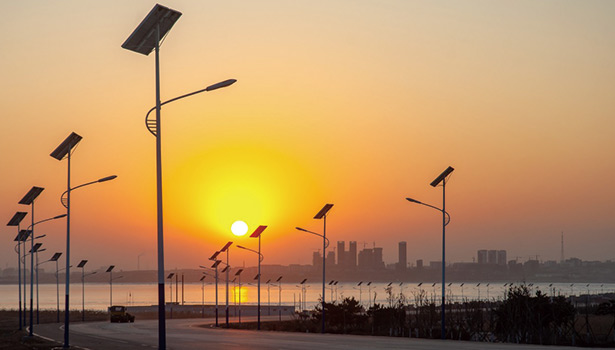
How Many Types of Solar Street Light Are There?
Split Solar Street Light
Split solar street light, also known as “separated solar street light”, is the first generation of solar street light. This type of street light usually installs the solar panel on the top of the pole, while the solar cells are suspended on the lower part of the pole or buried underground, with all components distributed in different locations.
The advantages of split solar street light
- Affordable cost: Split solar streetlights are usually the most affordable option, making them very attractive for projects with limited budgets.
- Flexible component replacement: when maintenance is required, if the results are not satisfactory, its various components can be replaced with products from other manufacturers, without brand limitations.
- Convenient battery maintenance: the location of the battery is easy to access, both inspection and replacement are easier to operate.
- Easy battery maintenance: the location of the battery is easily accessible, making it easier to operate both for inspection and replacement.
- Easy upgrading: In terms of improving lighting brightness, increasing the power of the battery panel and increasing the storage capacity, it is easier to realize the upgrading of the split street light.
Existing shortcomings of split solar street light
- Battery performance shortcomings: these streetlights widely use lead-acid batteries, but they are larger, have lower energy density, shorter lifespan, and require regular maintenance.
- Complex and time-consuming installation: the installation process may be more time-consuming and complex, requiring more labor and material costs, and more cumbersome wiring.
- Safety and anti-theft risks: Hanging or buried batteries have greater electrical risks and are more likely to be stolen.
- High long-term maintenance costs: In the long run, maintenance costs account for a large part of the project operation.
- Appearance is not beautiful enough: its appearance design is not very beautiful, not very suitable for urban projects with high requirements on aesthetics.
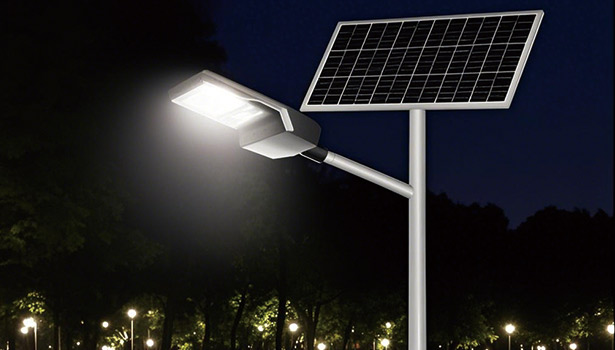
All-in-two Solar Street Light
The emergence of all-in-two solar street light is mainly due to the progress of battery technology. The emergence of lithium-ion batteries and lithium iron phosphate (LiFePO4) batteries provides an upgraded solution for energy storage. These batteries offer higher energy density, greater capacity, longer life and smaller size, allowing them to be integrated into streetlight fixtures for a cleaner, smoother look. However, the solar panels remain independent of the luminaire, mounted on top of the pole.
Unique advantages of semi-integrated solar street light
- Sufficient energy reserves: Due to the improved energy density of lithium-ion or lithium iron phosphate batteries, the all-in-twosolar street light has a stronger ability to power the street light even when there is no power generation.
- Superior battery performance: rechargeable solar battery has higher efficiency, longer life and lower maintenance frequency.
- Good battery protection: Compared with the batteries hanging or buried in the split street light, the batteries of the all-in-two solarstreet light are more difficult to be dismantled and less susceptible to damage by flooding and high humidity.
- Improved appearance and aesthetics: Compared with the traditional split street light design, the all-in-twosolar street light is more attractive in appearance.
Disadvantages of all in two solar street light
- Battery safety risk: Lower-quality lithium-ion batteries may suffer from thermal runaway, which may cause fires and damage to electronic equipment and lighting modules.
- Relatively high cost: Overall, the price of all-in-twosolar street light is higher than that of integratedsolar street light.
- Appearance is still a gap: compared with the all-in-onedesign, the all-in-twosolar street light is slightly inferior in terms of aesthetics.
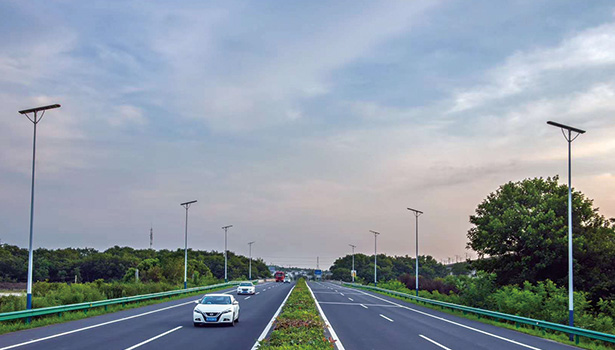
All-in-one Solar Street Light
All-in-one solar LED street light is different from traditional solar street light in that its components are all integrated together. The solar panel, controller, battery and LED light source are all installed in one housing. Due to the size limitation of the housing, its power is usually small, usually 80W and below. If the housing/panel size is expanded without cost, the power can be increased up to 120 W.
Notable advantages of all in one solar street light
- Easy installation: The installation process of integrated solar street light is very simple, without complicated assembly and wiring.
- Wide application: it can be widely used in city roads, country roads, squares, parks, villa areas and other places.
- Convenient transportation: the overall structure makes the transportation process more convenient, and it is not easy to damage the components.
Limitations of all in one solar street light
- Limited capacity of solar panels: the capacity of solar panels is relatively small, which is not suitable for areas with insufficient sunlight.
- Battery capacity: The relatively small battery capacity may not be able to meet the demand for long-time lighting when used in areas with long rainy days.
- High installation direction requirements: the installation direction of the solar panel has high requirements and needs to be precisely adjusted to ensure the best light absorption effect.
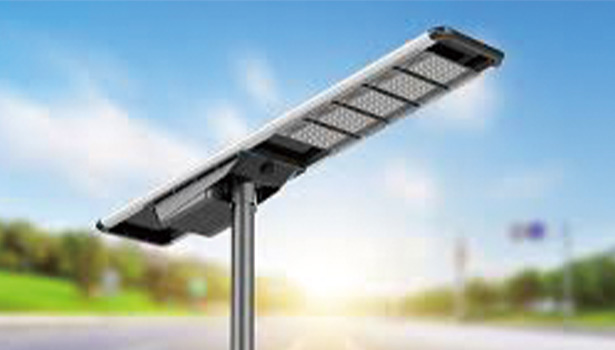
Factors to Consider Before Buying Solar Street Lights
Lighting technology
Solar powered street lights mainly use two lighting technologies, namely LED lamps and HID lamps. HID lamps consist of an internal arc tube, a gas and an external lampshade. HID lamps produce light by ionizing the gas through the transmission of voltage to the internal arc. HID lamps consume more energy to emit light than LED lamps and cannot withstand inclement weather, making them less suitable for street lighting, while LED lamps utilize diodes to produce an even, uniform light that is more energy efficient than HID lamps. While LED lights dim over time, the process is difficult to detect, and LED lights use less energy, making them an energy-efficient and cost-effective lighting solution.
Solar cell capacity
Solar LED street lights absorb the sun's energy through solar panels and store it in batteries for subsequent lighting. The battery capacity of a high efficiency solar street light is determined by the Ampere-hour (AH) and voltage. Many people tend to focus on the AH and ignore the voltage, but in fact both are crucial for the battery to store a large amount of energy. If you want to choose a battery with a certain AH, make sure its voltage is high enough. In other words, choose a battery that can provide a large combination of amperage and voltage output within an hour. If you choose a low-voltage battery, it may not be able to provide enough power storage capacity for LED solar street lights.
Luminous efficiency
Luminous efficiency refers to the lighting efficiency of a solar street light in lumens per watt (lm/w).LED lamps are one of the excellent lighting sources that can produce enough brightness with less energy. The luminous efficiency directly depends on the amount of light produced per watt. LED lamps have a higher luminous intensity than other traditional fluorescent and incandescent lamps. While fluorescent lamps produce only 50 - 60 lumens of light per watt and incandescent lamps produce only 12 - 24 lumens of light per watt, LED lamps are available in a wide range of lumens per watt options, each of which produces a high and consistent level of light.
Solar panel size
Solar panels absorb the sun's energy and convert it into usable electricity, so their size plays an important role in the functionality of energy-saving solar street lights. Today, manufacturers have introduced smaller solar panels that can absorb more energy and work efficiently. So, even small sized solar panels can work efficiently while maintaining their appearance. Don't think that a large size solar panel necessarily produces more energy than a smaller one.
Solar panel durability
Lastly, and very importantly, check the longevity of the solar street lights that you are going to buy. For example, if the solar panels purchased can barely withstand harsh weather conditions such as snow, high winds, hail, and rainfall, this means that their durability is poor and they need to be replaced as soon as possible. Reputable manufacturers do not compromise on the quality of their solar panels, and they go through rigorous testing to ensure that their products can withstand extreme weather conditions. Attention should also be paid to the built-in features of the solar street lights to protect the life of the batteries. For example, solar panels with passive infrared sensors (PIR) ensure a long battery life.
Environmental Impact
In today's era of strong sustainability, choosing energy-saving solar street lights is not just about lighting up the night, it's about being good for the planet. The environmental impact and sustainability of these street lights is crucial. Choosing solar street lights means a significant reduction in carbon emissions compared to traditional lighting solutions. Not only that, but the materials used in their production and the manufacturing process should also be considered. Are the components recyclable at the end of their useful life? Is the manufacturing process designed to minimize the impact on the environment? These questions are critical. By choosing energy-saving solar street lights with a focus on recyclability and a small carbon footprint, we are not only lighting up the streets, we are lighting the way to a more sustainable future.
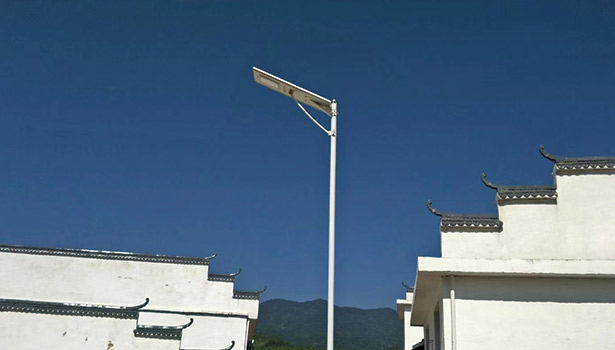
Different types of solar powered street lights have their own advantages and disadvantages, and when choosing one, you need to consider lighting technology, battery capacity, luminous efficiency, panel size and durability, as well as environmental impact and other factors. Only according to the specific use of the scene and the needs of the weighing of various factors, in order to make the most suitable choice, to ensure that the solar street lamp in providing efficient lighting at the same time, to achieve the best economic and environmental benefits.


